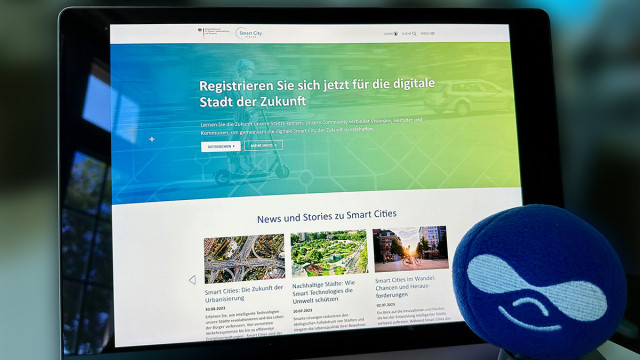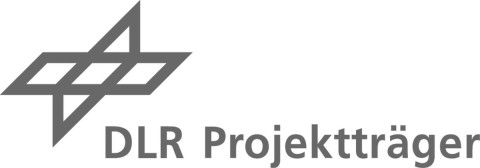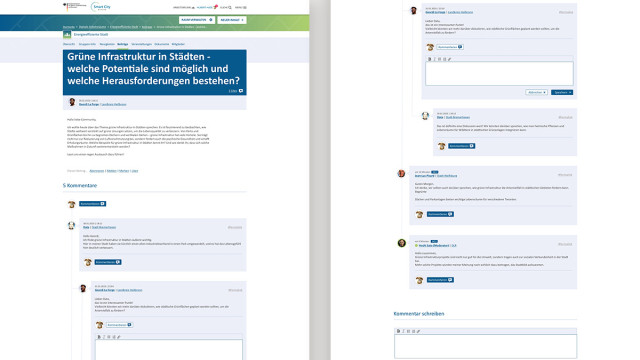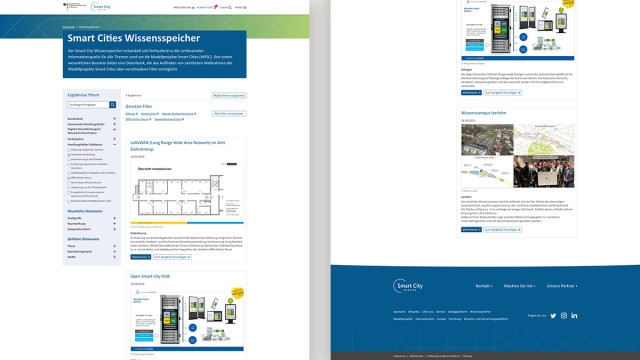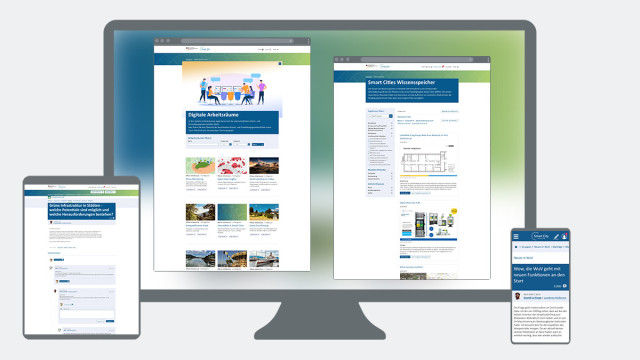The German federal government is currently funding 73 “Smart Cities Model Projects” (MPSC). On behalf of the project management agency DLR, a knowledge and networking platform is being set up in stages, the first version of which has now been launched. The participants in the model projects can exchange ideas here and build up a common knowledge base, which will also be made available to the public in the future.
We have been developing this multi-year project since November 2022. It has now been launched and will be rolled out in stages. In the first step, we merged an existing knowledge platform with a networking platform and developed the modular design.
In addition to the published profiles of the measures, logged-in users can find documents and studies, appointments, share news and discuss, find cooperation partners and contact persons, and maintain contacts in their workspaces.
Sounds like OpenSocial? That's what we thought at first. But the assessment quickly showed that the requirements were too complex for the planned excessive use of Groups for very different products. In addition to open and closed workspaces, there are also organizational groups that do not appear in the overviews for the workspaces. Participants from cooperating municipalities must be able to be brought together. Several very different stakeholders are responsible for sub-areas. And a CRM (contact management) system is to be integrated.
The project is an early adopter of Single Directory Components. We have provided feedback and are pleased that SDC is now being incorporated into the Drupal core.
Another very positive aspect is that the project sponsor itself raised the issue of reusability at an early stage. As a result, care was taken to ensure that all concepts were as generic as possible. Several modules were developed for broad usability and will be published on Drupal.org gradually after testing.
Note on the images: much of the content is currently only accessible to participants in the model projects and is therefore not public, so for data protection reasons we were unable to show screenshots of the live system and real content – in case anyone was wondering about the Star Trek users.
Project Goals and results
ASYCHRONOUS COLLABORATION TAKES PLACE
Complete success: The platform is being used, model projects are finding cooperation partners in other model municipalities, exchanging ideas, sharing research results and questions.
THE PUBLIC SHOULD BE ABLE TO FIND OUT ABOUT THE PROJECTS
Import of information from the old system successful: 568 measures in a wide variety of fields of action are publicly described, can be filtered granularly, and compiled in a comparison list.
MODULAR DESIGN
The design components are created as SDC components (including storybook) and also take into account further expansion stages. The atomic design approach makes it easy to remix component modules.
MODULAR ARCHITECTURE
The group approach allows many concepts and data models to be flexibly reused and applied in different contexts. The implementation of specially developed plugin systems for mapping the different group logics (access, rendering, workflows) means that the system remains easy to maintain despite its high technical complexity, and requirements can be implemented in a finely structured manner without having to implement switches.
Challenges
REUSABLE CONCEPTS
For example, the decision to never render nodes directly, but always to make group relations and all areas of the platform into groups. This made it possible to use the various content that can be used for the website context as well as the CRM or group context multiple times in different constellations without having to maintain redundant data. In addition, groups can use content over which they do not actually have control, but to which they want to refer. With this concept, we have also implemented a very flexible rights and role system in various sub-areas of the platform, which enables a high degree of self-administration by customers and group administrators.
THREADED COMMENTS
Another challenge was to display and make the comment threads usable in such a way that they feel as intuitive as possible and it is always clear who has replied to which comment. To achieve this, we developed visual concepts (“path lines”) and made a number of technical optimizations, including ajax_comments and several patches (e.g., so that the entire page does not reload when a comment is submitted, but only the area with the form).
FLEXIBILITY FOR STAKEHOLDER DOMAINS
For websites, CRM, and smart city groups, there are several equal stakeholders with a wide variety of requirements, including different—customizable—layouts.
We have therefore developed a sophisticated system of layout builder blocks and components that enable both dynamic and static pages to be built flexibly and populated with both global and group context. For “non-power users,” we continue to use paragraphs for the main editorial content so as not to overwhelm the editorial team, while the editor-in-chief has complete freedom to override the layouts of individual nodes or areas. The two modeling concepts fit together like puzzle pieces and cover different needs.
FRONTEND WITH SINGLE DIRECTORY COMPONENTS
In terms of frontend technology, there was the additional challenge that during development it became apparent that Single Directory Components (previously cl_components) would be integrated into the Drupal core. Since we have been working according to Atomic Design principles for a long time, we relied directly on cl_components for frontend development and also found and contributed some bugs/improvements, which went really smoothly and efficiently with the maintainer e0ipso.
A few weeks later, these were incorporated into Drupal Core with SDC, meaning that the frontend architecture of the project is now rendered entirely with core resources and should be easy to maintain in the long term. Since we had opted for the contrib variant of this approach early on, migrating to the core variant was a breeze.
HYBRID DEVELOPMENT TEAM
The hybrid team with developers on the customer side could be seen as a challenge, but our many years of experience in community projects are our advantage. The collaboration works smoothly: one solution architect from each team works out the requirements with the stakeholders and coordinates the implementation in both teams.
STAKEHOLDER COORDINATION
Taking different stakeholders (based in very different organizations) into account often means that the service provider has to deal with conflicting requirements. We prevented such a situation by taking over the coordination of the stakeholders (for the technical part) from the outset.
Conclusion
Employees from 73 model projects in a total of 90 cities and municipalities are learning about and appreciating the strengths of Drupal in their networking activities. They will carry this experience forward as a benchmark in other projects.
In addition, the Smart Cities platform is another positive example of the trend toward increased use of open source software solutions in federal institutions, thereby further supporting the concept of “public money, public code.”
